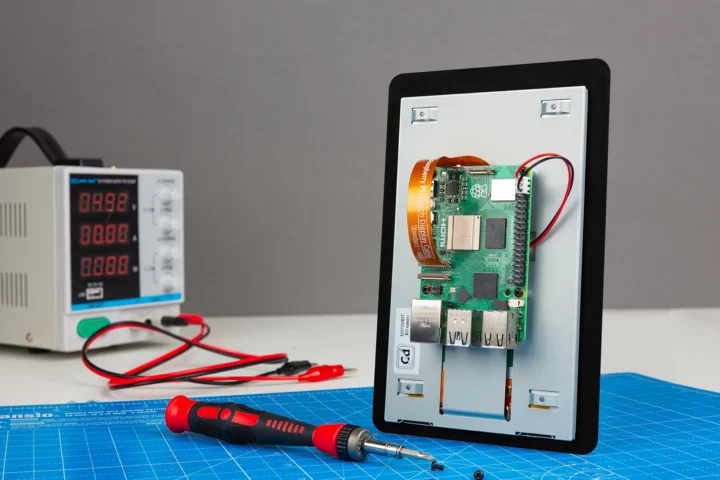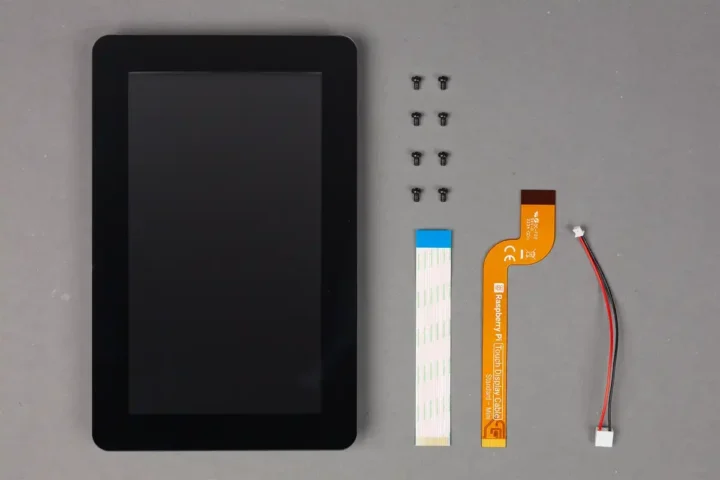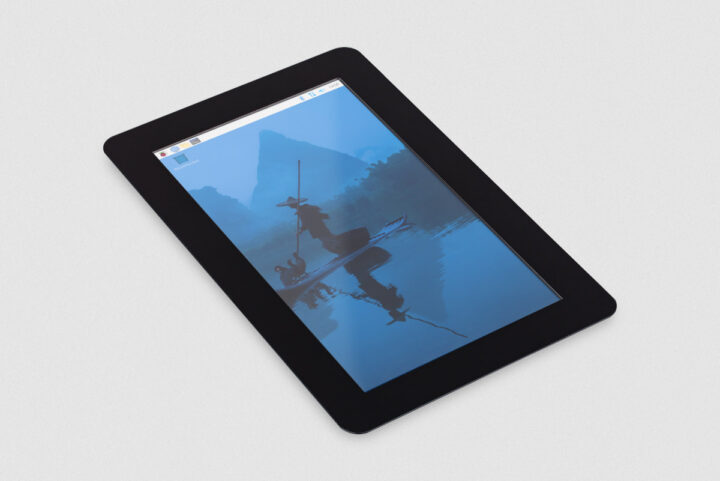Raspberry Pi has launched the Touch Display 2, a 7-inch touchscreen RGB TFT display with 1280×720 designed to be connected to Raspberry Pi single board computers.
It improves on the original Raspberry Pi Touch Display with a higher resolution (1280×720 vs 800×480) and a slimmer form factor thanks to the integration of the display driver PCB into the display enclosure itself.
Raspberry Pi Touch Display 2 specifications
- Display Type – 7-inch 24-bit RGB TFT display
- Resolution 1280 x 720 resolution
- Touch panel – 5-point multi-touch capacitive touch panel
- Active area – 155 x 88 mm
- Backlight type – LED B/L
- Surface treatment – anti-glare
- Host interface – MIPI CSI connector with ribbon cable compatible with all Raspberry Pi boards except the Raspberry Pi Zero line
- Power Supply – 5V DC via 2-wire, 3-pin connected inserted into the 40-pin GPIO header
- Dimensions – 189.32 x 120.24mm

The back of the display comes with four mounting holes for the Raspberry Pi 5 or other Pi SBCs. A ribbon cable connects to the MIPI DSI connector and a 3-pin connector with 5V and GND is inserted into the Pi’s 40-pin GPIO header to provide power.
Raspberry Pi OS provides touchscreen drivers with support for five-finger touch, support for landscape or portrait mode, and an on-screen keyboard that removes the need to connect a keyboard or mouse while keeping full functionality. Like its predecessor, the display is useful for HMI projects such as tablets, entertainment systems, and information dashboards.

Raspberry Pi sells the Touch Display 2 for $60 plus taxes and shipping through its network or distributor. It can be used for commercial products too, as the company promises the new touch display will remain in production until at least January 2030. Additional information may be found on the product page and the documentation website.

Jean-Luc started CNX Software in 2010 as a part-time endeavor, before quitting his job as a software engineering manager, and starting to write daily news, and reviews full time later in 2011.
Support CNX Software! Donate via cryptocurrencies, become a Patron on Patreon, or purchase goods on Amazon or Aliexpress





